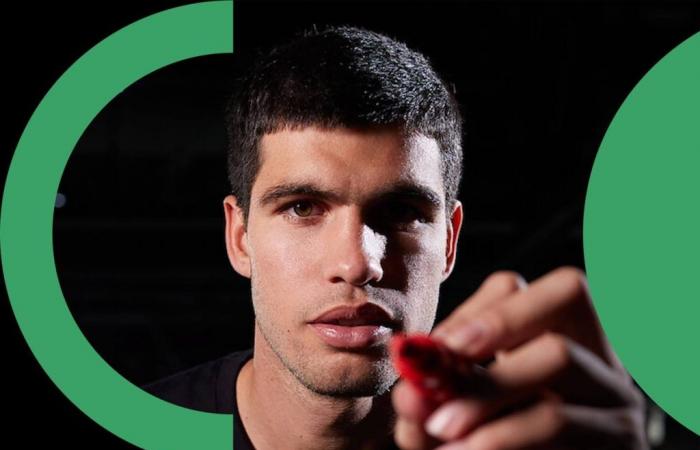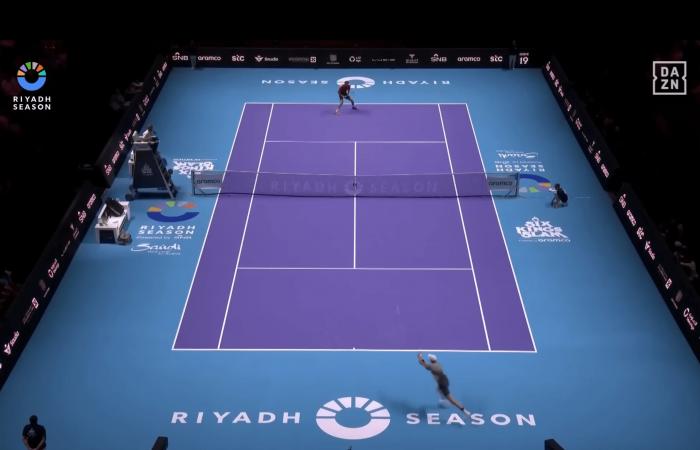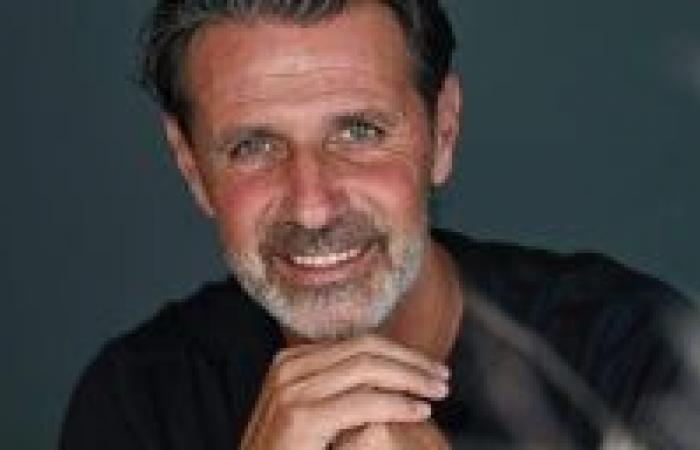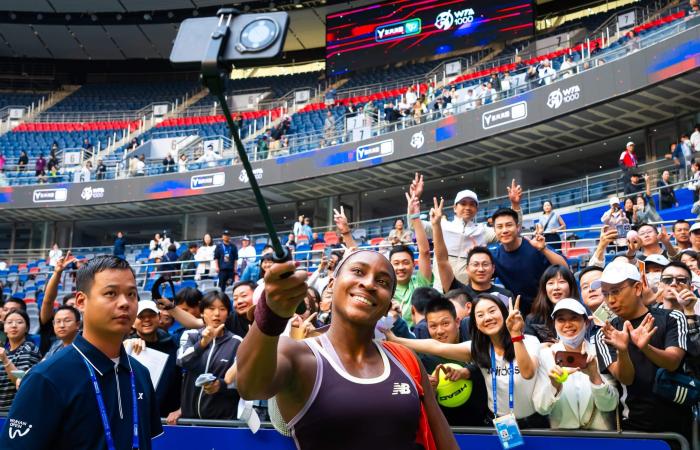This article is part of The Changemakers series, focusing on the behind-the-scenes executives and people fueling the future growth of their sports.
It started with a camera angle.
The Six Kings Slam, the richest Tennis exhibition event in history, will award its winner $6million (£4.6m). Hosted in Riyadh and organized by Saudi Arabia’s General Entertainment Authority (GEA), it attracted six players with 53 Grand Slam titles between them — Rafael Nadal, Novak Djokovic, Carlos Alcaraz, Jannik Sinner, Daniil Medvedev and Holger Rune. Holograms of the contenders, all of whom received more than $1m just for turning up, beamed across the venue in a light show befitting a concert.
The kingdom’s heavy investment in sport since 2021, designed to enrich and diversify its economy while putting a veneer of international respectability on a country repeatedly criticized for its human rights record in the process known as sportswashing, had its latest flagship event.
Then the television coverage started for Sinner’s clash with Medvedev, and nobody could see the ball. By next day’s semifinals, it was fixed, but with the eyes of the tennis world — particularly the ATP and WTA Tours — trained on Riyadh, including those watching free of charge on X, the Six Kings Slam had missed an easy put away.
GO DEEPER
Six kings, $15m and slow progress: How Saudi Arabia’s push into tennis stalled
Across the world in Frankfurt, Germany, another would-be vision of tennis’ future prepares to get underway on October 18. Ultimate Tennis Showdown, known as UTS, is the brainchild of super-coach Patrick Mouratoglou, longtime member of team Serena Williams and currently working with four-time Grand Slam champion Naomi Osaka.
In its latest installment, American star Ben Shelton, former Grand Slam champion Dominic Thiem (who will retire from tennis next week) and French showman Gael Monfils are among eight players competing for the so-called Zeus trophy, along with just over $420,000 for the winner. In a nod to the esports and streaming crowd it is attempting to attract, players will be given nicknames — for example, Ben ‘The Mountain’ Shelton’s is taking on Jan-Lennard ‘The Thunder’ Struff.
Meanwhile, three ATP tournaments and two WTA tournaments enter their final stages. The former are in Europe, the latter in Asia; all three men’s tournaments are 250-level events, the lowest on the main tour, while Ningbo, China hosts a 500-level WTA tournament and Osaka puts on a 250 in Japan. The average prize money for the winners of those events is around $130,000.
The tours’ social media accounts and YouTube channels send highlights around the internet, from world No. 225 Priscilla Hon’s electric forehand during a three-set thriller against No. 12 Anna Kalinskaya, to former Grand Slam champion Stan Wawrinka’s first top-10 win in 14 months against world No. 7 Andrey Rublev in Stockholm.
Among those ATP highlights was the Six Kings Slam. Tennis TV, the ATP-owned digital subscription service, shared clips of Sinner vs. Djokovic and Nadal vs. Alcaraz, even though the Six Kings Slam is not an ATP Tour event (players receive no ranking points) and has broadcast deals with DAZN, Sky, and the Tennis Channel across the world. It does not just want the players from the ATP Tour; it wants the media infrastructure too.
Later that week, Mouratoglou admitted in an interview with Talking Tennis that UTS, which distributes its own highlights on its YouTube Channel but is broadcast through Discovery+, Tennis Channel, and other broadcasters, “cannot change” the sport. As of now, it can merely exist alongside it.
As The Athletic reported this week, the Six Kings Slam has become a test bed for both Saudi Arabia’s ambitions as a tennis disruptor and the ATP and WTA Tours’ security as the sport’s status quo. Since the unveiling of the kingdom’s $1billion investment proposal at this year’s Indian Wells Masters 1000 tournament to executives (which included the extant PIF sponsorship of the ATP rankings and tournaments, and its later deals to sponsor the WTA rankings to host the WTA Tour Finals in Riyadh) the core of that proposal, a 1000-level event in the kingdom, has stalled. It has made inroads into the infrastructure of tennis, but for now, like UTS, its on-court contribution exists adjacent to the main action.

GO DEEPER
Patrick Mouratoglou says ‘something has to be done’ for tennis’ future. Is he that something?
In an interview with The Athletic this year, Mouratoglou decried the sport’s aversion to change and its reliance on calcified ideas of renown and importance tied to the prestige and reverence of Grand Slams and 1000s, even though that renown is how he made his name as Williams’ coach.
It may seem facile to say that without famous tennis players who play in the biggest tennis tournaments, tennis events that want to be an alternative to those tournaments are nothing. But in the wider context of the sport’s relationship with media and culture, this is an avoidable truth that has been turned into gospel.
Break Point, the tennis successor to Formula One Netflix series Drive to Survive — which was credited with boosting race audiences across the United States — failed in part because of a lack of access to the top players on tour. Iga Swiatek passed on the second series because she took issue with how she was represented in the first. With myriad tennis stars from Roger Federer and Williams to Novak Djokovic and Carlos Alcaraz either having produced or being involved in producing their own films in which they can exercise creative control, while their distributors (including Netflix, which is partnering on the Alcaraz documentary with Morena Films) reap the viewing figures, there appears little appetite for a view with a wider lens. Netflix even created a tennis match of its own with the ‘Netflix Slam’ between Nadal and Alcaraz in March 2024.
The problem with stardom is that it ends. Federer and Williams have retired. Rafael Nadal is about to join them and Djokovic is in the tail-end of his career. Men’s tennis is now catching up to women’s in the process by which the entrenched cultural superstardom of a few names gives way to a wider slate of players and personalities. Alcaraz and Sinner are without doubt at the top of the sport, alongside Djokovic, but those three cannot sustain interest through their tennis and their personalities alone. Swiatek, Aryna Sabalenka, and Coco Gauff, along with Elena Rybakina as she returns to the tour, cannot do it alone for the WTA Tour.
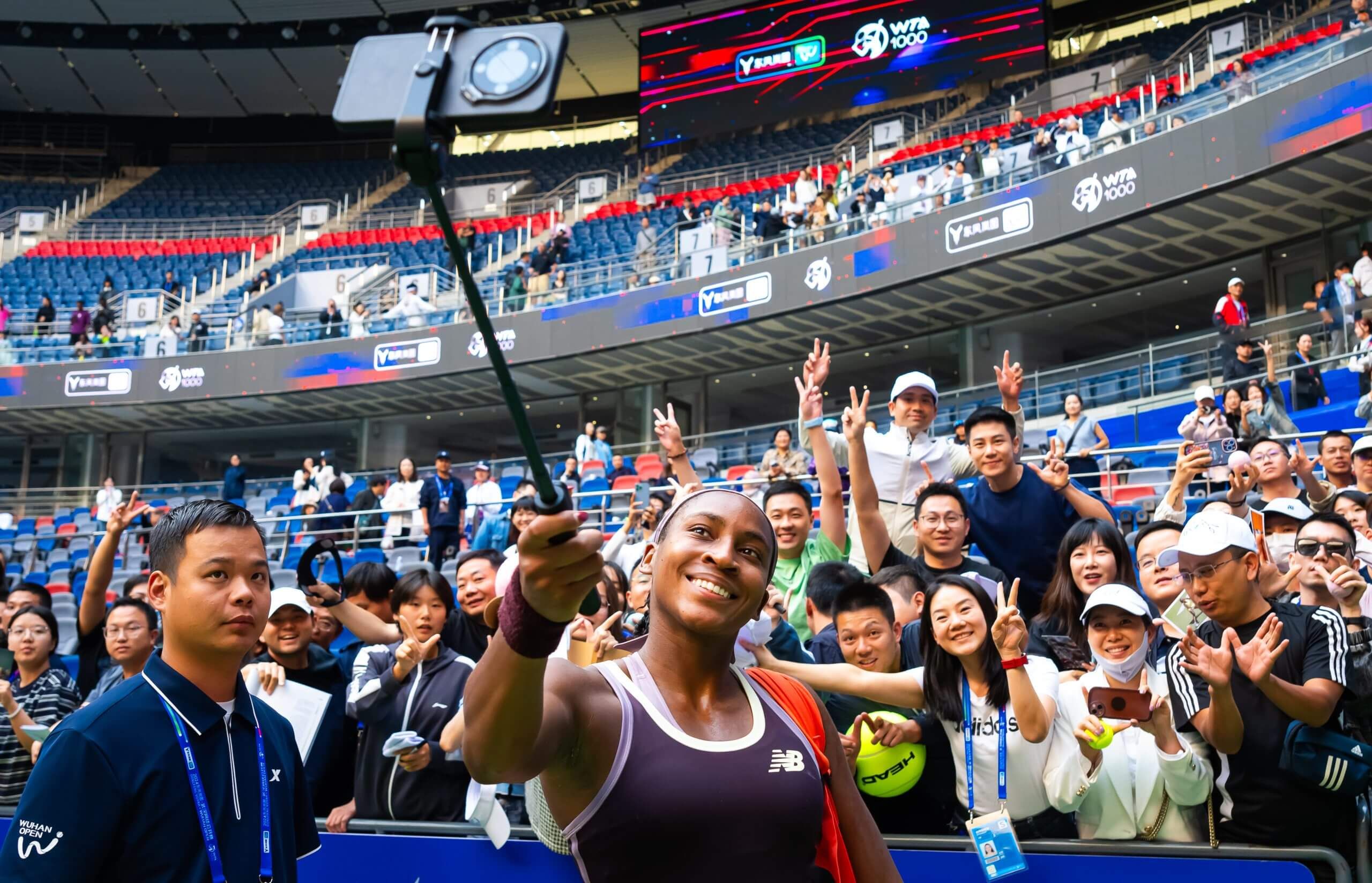
Coco Gauff uses social media to connect to new fans (Robert Prange / Getty Images)
Drive to Survive didn’t see this as a limitation. It started with a similar problem, with Mercedes and Ferrari reticent to participate. Red Bull, the team of now-three-time world drivers’ champion Max Verstappen did, but the documentary series also leaned on Lando Norris and other drivers who were not stars through their achievements when it premiered in 2019, but through their personalities. Verstappen had similar concerns to Swiatek, but returned for season five after meetings with executives. He was less visible in season six, despite he and Red Bull’s dominance through 2023.
Norris had built up a presence on the streaming service Twitch, where Charles Leclerc (Ferrari), Alex Albon (Williams) and George Russell (Mercedes) joined him during the Covid-19 pandemic in 2020. Verstappen also streams. By 2023, Norris outranked Neymar and Sergio Aguero for views on the platform, having never won a single Formula One race, a feat he achieved this year.
Tennis is not short of players who want to build followings on non-traditional media — Gauff, Osaka and Daria Saville on TikTok for the WTA, Zizou Bergs on the same platform, and Daria Kasatkina’s What the Vlog series are just a few, as well as Caroline Garcia’s podcast, Tennis Insider Club.
But its fragmented and expensive media rights for tournaments, tied to multiyear contracts, prevent players from posting footage of the matches they play and fan accounts from creating content around highlights, while other social media users, including influencers inside and outside the sport, can freely post footage of matches they attend live.
ESPN will pay $2.04billion (more than £1.5bn) to air the U.S. Open through 2037, while Wimbledon’s broadcast deal with ABC and ESPN networks comes in at $52.5million (£40.3m) per year as of 2024, according to SP Global.
Players and fans — who create accounts on X for their favorite players, or creative highlights packages that remix or reorient the sport away from just who wins or is the best, often before being copyright striked — essentially enjoy a parallel relationship to that of UTS and Six Kings with the tours and Slams. They offer possible avenues into the sport for new audiences that don’t have to come at the expense of tennis’ larger ambitions, but are side-barred by the infrastructure of the sport itself.

GO DEEPER
Social media brings tennis players and fans closer, for better and for worse
None of this means that either a $15m exhibition or an event that remakes the scoring system and format of tennis entirely are the only solutions. It does not make Mouratoglou’s argument that tennis fans are too old and too quiet completely true, rather than partially true and completely incendiary. It does not erase the problems with Saudi Arabia’s human rights record as it aims to secure that coveted 1000-level tournament.
It does mean that tennis is yet to fully reckon with its issues with discoverability, which remain too tied to its most famous stars and events, even as new fans take greater interest in players with personalities to which they can relate, or gamestyles that are interesting, over and above their world ranking, trophies, or sponsorship deals. It is yet to untangle itself from the ways that worked for so long. There have been some successes — the ATP-produced video in which Djokovic, Murray, and other top men’s players leaned into the trope that everything is scripted was an irreverent hit — but they remain exceptions to the rules.
Before Sinner and Alcaraz prepared to battle for $6m Saturday, they had a day off.
Not due to the benevolence of the Six Kings Slam, but because ATP rules prohibit players from playing three days in a row at an unsanctioned event.
(Top image: Courtesy of Netflix; Design: Sean Reilly)
The Changemakers series is part of a partnership with Acura.
The Athletic maintains full editorial independence. Partners have no control over or input into the reporting or editing process and do not review stories before publication.

